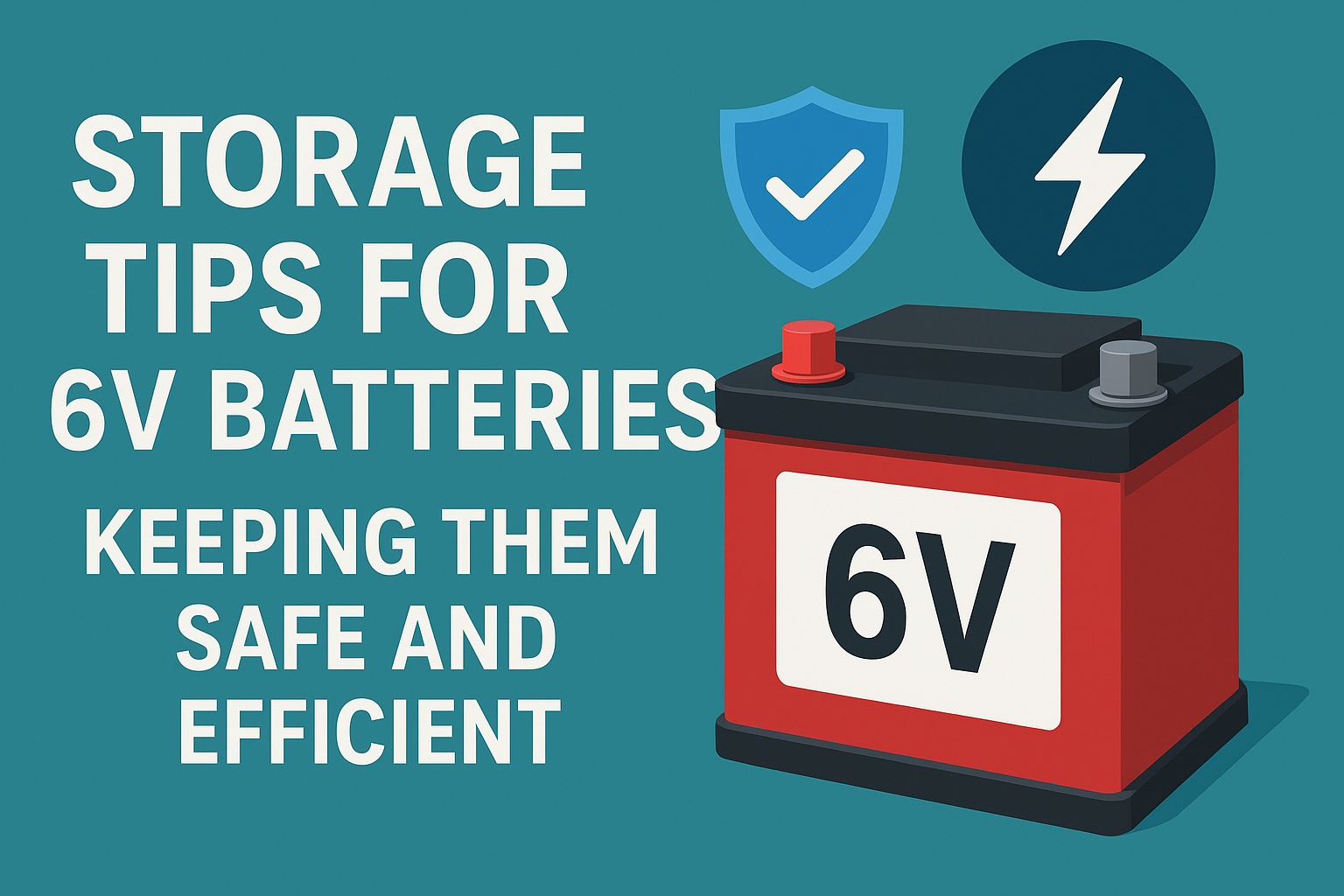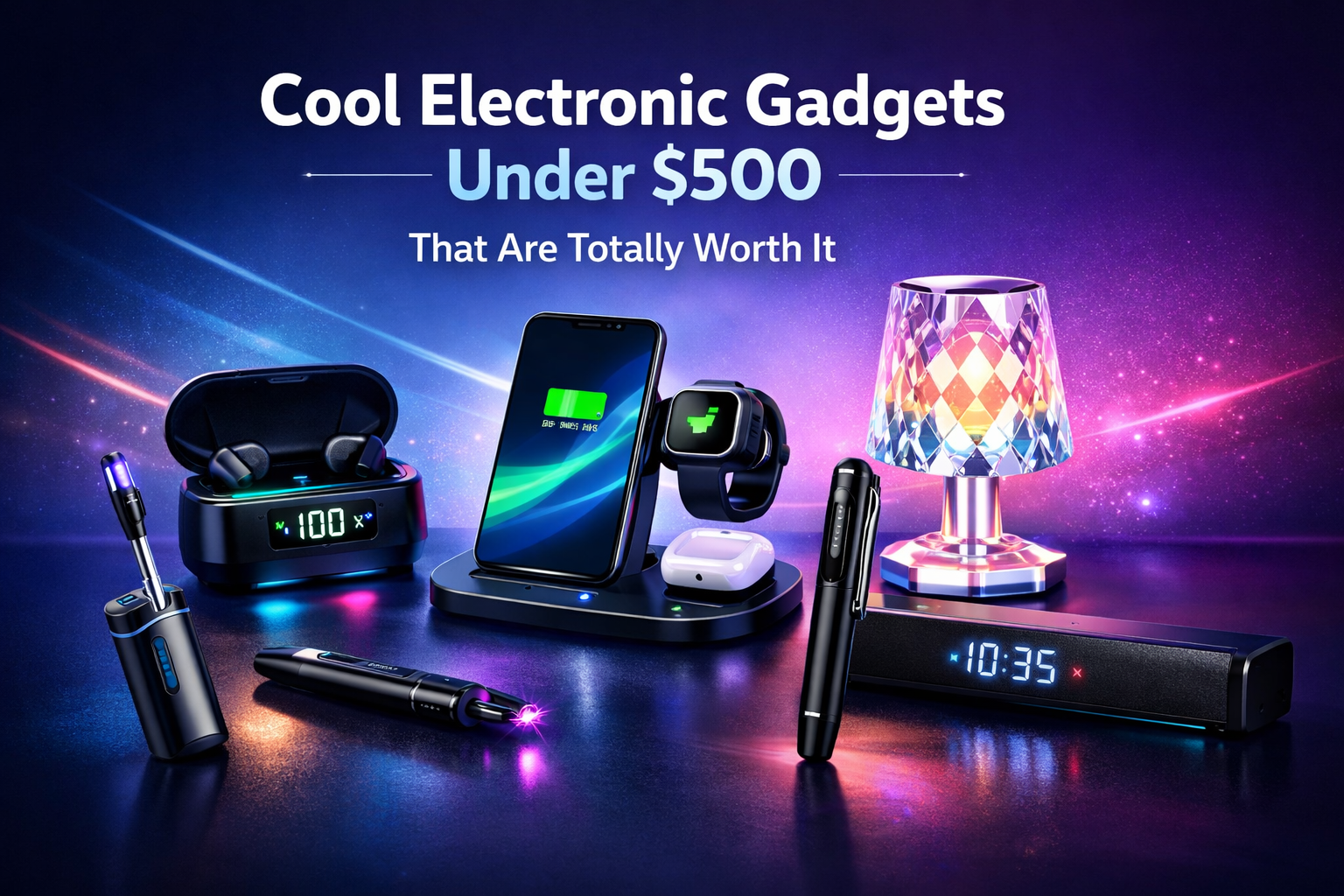Storage Tips for 6V Batteries: Keeping Them Safe and Efficient

6V batteries are used in many products around us. You can find them in emergency lights, kid toys, flashlights, power backups, gate openers, medical devices, and portable machines. These batteries may look small, but they play a very important role in making these devices work smoothly. When a 6V battery is stored correctly, it lasts longer, delivers better performance, and remains safe to use. But when the same battery is stored carelessly, it can lose charge, become weak, or even get damaged permanently. This is why proper storage is important.
Many users replace their batteries sooner than needed simply because they do not store them the right way. Temperature, humidity, dust, and improper handling are some of the common reasons for battery damage. The good news is that with a few easy steps, you can protect your 6V batteries and make them last much longer. This blog will guide you with simple, clear, and practical storage tips that anyone can follow at home, office, workshop, or warehouse.







Why Proper Storage of 6V Batteries Is Important
When you store a 6V battery in the right environment, it stays healthy and ready for use. The inside structure of the battery is sensitive, and even small mistakes can lead to performance loss. For example, keeping a battery in a very hot place can dry out internal chemicals. Keeping it in a very cold place can block chemical reactions. Storing it near metal items can cause accidental sparks or short circuits. These issues reduce battery life and can also be risky.
Proper storage helps in:
- Maintaining battery capacity
- Reducing self discharge
- Keeping internal chemicals stable
- Preventing leaks and corrosion
- Ensuring longer shelf life
- Protecting the battery from physical damage
- Improving safety during storage
So, proper storage is not only about keeping the battery safe but also about saving money and improving performance.
Best Storage Tips for 6V Batteries
Below are the best and simplest tips to store your 6V batteries safely and keep them efficient for a long time.
1. Store in a Cool, Dry, and Clean Place
Temperature plays a very important role in battery storage. Extreme heat can increase self discharge and damage internal parts. Moisture can cause corrosion on the terminals. Dirt and dust can also affect performance. Always choose a cool, dry, and clean place for storage. A temperature between 10 and 25 degrees Celsius is ideal for most 6V batteries.
2. Keep the Battery Away from Direct Sunlight
Direct sunlight quickly increases the temperature of the battery. High heat can cause the chemicals inside the battery to break down faster. It also increases the chances of leaks in certain types of 6V batteries. Always store the battery in a shaded location away from windows, vehicles, or machines that release heat.
3. Charge the Battery Before Storing
If you are storing a rechargeable 6V battery, make sure it has some charge before storage. Storing the battery completely empty is harmful because cells can become weak or fail. It is recommended to charge the battery to around 50 to 70 percent before storing it for a long period. This helps maintain internal balance and keeps the battery ready for future use.
4. Disconnect from Devices Before Storage
Many users keep the battery attached to the device even when they are not using it. This slowly drains the battery because many devices consume a small amount of power even in standby mode. Always disconnect the battery from the device before storage. This small step can increase battery life greatly.
5. Clean the Battery Terminals
Dirty or corroded terminals affect battery performance. Before storing the battery, wipe the terminals with a dry cloth. If you notice any corrosion, gently clean it. This prevents connection issues and keeps the battery healthy. Avoid using water or wet cloth as moisture is harmful during storage.
6. Use the Original Packaging for Protection
If you still have the original box or packaging of the battery, use it. This packaging is designed to protect the battery from shocks, dust, and temperature changes. It also prevents accidental contact with metal objects. If the original packaging is not available, wrap the battery in a soft, dry cloth and keep it in a safe container.
7. Keep the Battery Away from Metal Objects
Metal items like tools, screws, coins, or keys can cause accidental short circuits if they touch the battery terminals. This is dangerous and can damage the battery instantly. Always store 6V batteries away from any metal items. Using a plastic storage box is a very safe option.
8. Check the Battery During Long Storage Periods
If you plan to store the battery for many months, do not forget about it completely. Check the battery every few months. For rechargeable batteries, give a small recharge to maintain cell health. For non rechargeable types, check for leaks, swelling, or corrosion. Regular checks help you catch early signs of damage.
9. Keep the Battery Upright
Some 6V batteries especially lead acid types should be stored upright. Storing them sideways increases the risk of leakage. Upright positioning keeps internal chemicals stable and prevents pressure buildup. If you are unsure, check the battery label or follow the general rule of upright storage.
10. Maintain a Stable Temperature
Frequent temperature changes are not good for 6V batteries. Sudden heat and extreme cold affect chemical balance. Avoid storing batteries in places like attics, cars, or garages where temperature changes quickly. A stable room temperature environment is always the best choice.
Extra Tips for Long Term Storage
If you are storing the battery for several months or years, here are additional tips:
- Label the storage date so you know how long it has been stored
- Store batteries in a low humidity environment
- Keep batteries out of reach of children and pets
- Do not stack heavy items on top of the battery
- If storing multiple batteries, keep them separated to avoid contact
Common Mistakes People Make While Storing 6V Batteries
Many people unknowingly make mistakes that reduce battery life. Some common errors include:
- Storing batteries in very hot locations like a car dashboard
- Leaving the battery connected to a device
- Keeping batteries where moisture can reach them
- Mixing old and new batteries together
- Keeping batteries loose in a drawer with metal objects
- Ignoring the battery for years without checking it
By avoiding these mistakes, you can maintain the health and efficiency of your battery for a long time.
Conclusion
Storing 6V batteries properly is simple and does not take much time. With the right storage conditions, clean handling, and regular checks, your battery can last much longer and work more efficiently. Whether you use 6V batteries at home, in business, or in workshops, these easy tips will help you protect your investment. Batteries are not cheap, and replacing them very often is costly. With proper care, you can save money, improve safety, and enjoy long-lasting performance.
Always remember that a well stored battery is a reliable battery. Follow these storage tips and keep your 6V batteries safe, strong, and ready for use whenever you need them.
Frequently Asked Questions About Storing 6V Batteries
What is the best temperature to store a 6V battery
A cool and stable room temperature is ideal. A dry place with mild temperature helps keep the battery healthy for a long time.
Can I store a 6V battery when it is fully discharged
No. Storing a fully discharged battery can weaken the cells. A half charged level is better for long term storage.
How often should I check a stored 6V battery
Checking the battery every few months helps you detect any leaks, corrosion, or low charge in time.
Is it safe to keep a 6V battery in the garage
It is not recommended because garages have fluctuating heat, cold, and humidity. A stable indoor place is better.
Should I keep the battery connected to the device while storing
No. Devices drain small amounts of power even when off. Disconnecting the battery protects it from self discharge.
Can moisture damage a stored 6V battery
Yes. Moisture can cause rust and corrosion. Always choose a dry environment for storage.
Can I store different types of batteries together
It is better to store them separately because different types can react differently and affect each other.
Is it fine to store 6V batteries near metal tools
No. Metal objects can touch the battery terminals and create a short circuit. Keep them safely apart.
Do I need to clean the battery before storing
Yes. A simple dry cleaning of the terminals prevents corrosion and helps maintain performance.
How long can a 6V battery stay in storage
With proper storage and regular checks, a 6V battery can stay healthy for a long time without losing much performance.














